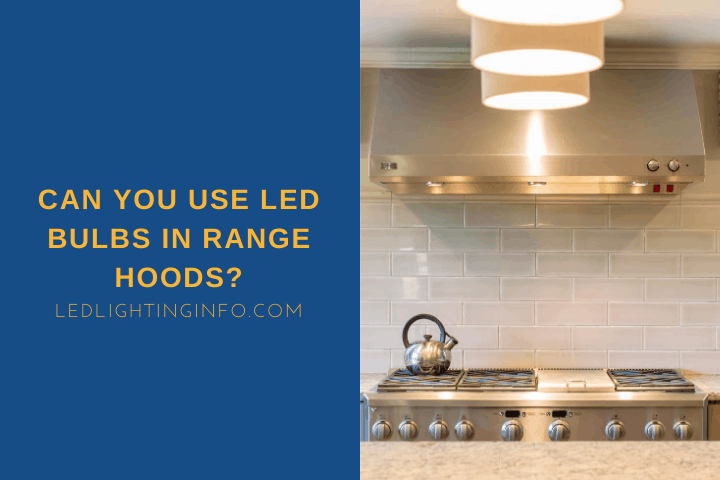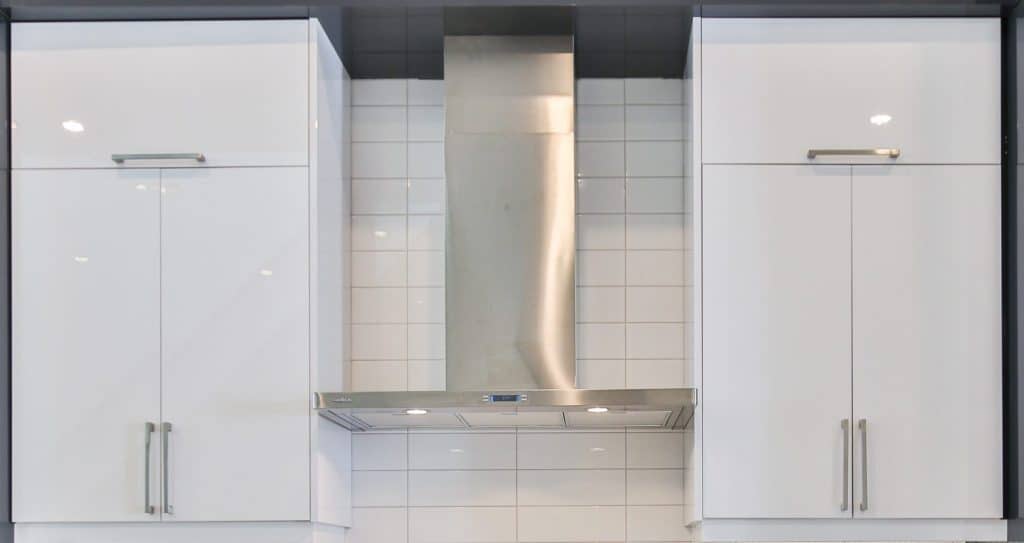Cooker range hoods are an often-overlooked aspect of modern kitchen design. But the reality is, they serve a fundamental purpose.
They remove steam, heat, and smells from the room, they also provide useful task lighting. In turn, this helps to keep your kitchen cleaner and healthier.
There’s just one problem… range hood lights are prone to breaking. Although they’re relatively straightforward to replace, it’s bound to become tedious and expensive if you’re always having to change your bulbs.
So you’re not alone in wondering whether standard range hood bulbs can be replaced with long-lasting LEDs.
Some LEDs can be used in range hoods, but it’s not a simple switchover. The range hood has to be LED compatible, and LED bulbs need to be durable, heat-resistant, vibration-resistant and have good CRI.
The good news is that range hoods with pre-fitted LED bulbs are slowly becoming the norm. It’s estimated that around 75% of new hoods are equipped with LEDs.
But what about the other 25% of range hoods? What about people who have no plans to buy a new hood any time soon? Are they stuck with tenuous conventional bulbs?
Not necessarily! Stick around for a full evaluation of the problems with range hoods, whether LEDs are safe to use in range hoods, and how to pick an appropriate bulb.
What Are The Problem With Range Hoods?
As I’m sure you can imagine, range hood bulbs have to deal with a lot. Compared to standard household lights, there are four main areas of friction:
- Heat
- Humidity
- Grime
- Vibration
In the past, hood ranges typically used incandescent or halogen bulbs. Both of these bulbs produce light by heating a thin filament.
Since there’s a lot of heat involved, these bulbs are accustomed to the high temperatures of a range hood.
Let’s say you’re boiling some pasta. The heat rising from the pan will be around 212°F (100°C).
As the steam rises towards the range hood, one of the first things it hits will be the lights. These are typically located along the front edge or in each corner of the hood.
Ultimately, this means that whichever bulbs you use, they have to be able to handle soaring temperatures of at least 212°F. If not, they will be pretty redundant in a range hood.
But that’s not the only concern. Steam also contains water droplets, which means that the range hoods bulbs need to be somewhat water-resistant.
Will humidity cause the metal fixtures on the bulb to corrode? Will condensation reduce the lifespan of the bulb?
The third consideration is grime. The process of steam distillation causes tiny particles of oil to combine with the rising water vapor.
Again, these particles are likely to land on the hood’s lights first. This is problematic as oil can become a point of heat, causing certain bulbs to shatter.
The fourth problem is vibration. The primary function of a range hood is to suck products such as heat, steam, and smoke out of the air. To do this, they use a mechanical fan.
The issue with this is movement. If your bulbs are not robust enough, these small vibrations may disturb or break their inner components, preventing them from working.
Are LEDs Safe To Use in A Stove Range?
As you can see, lots of factors go into selecting an appropriate range hood bulb.
Although incandescent and halogen bulbs have been tried and tested, many countries have started to ban these inefficient light sources. So what’s the alternative?
Nowadays, most stove ranges are LED compatible. This means that if the original bulbs blow, it’s safe to replace them with LEDs.
Beyond this, if you want to replace your range hood bulbs with LEDs, you do so at your own peril. Modifying your appliance is likely to void any warranty that you have.
The first cause for concern is heat. LEDs perform poorly at high temperatures.
Excess heat increases the rate of lumen degradation, which in turn shortens the LED’s lifespan.
As I’ve mentioned, range hood bulbs are exposed to extremely high temperatures. So a replacement LED needs to have adequate heat management devices i.e., a heat sink.
This is particularly important if the bulbs are in an enclosed fixture.
This can be somewhat of a lose-lose situation – enclosed fixtures are better at protecting the LEDs from steam and grease. Still, they’re more likely to trap heat, allowing it to build up and degrade the bulb.
Another compatibility issue comes from the LEDs low voltage. Compared to the 120 volts required by incandescent bulbs, LEDs typically require between 1 and 3 volts.
Consequently, if you install an LED into a range hood designed to work exclusively with incandescent bulbs, your LED will be overdriven. This will cause it to flicker and/or fail.
To counteract this, you could install a driver to downgrade the mains voltage to a lower, more suitable level. The problem with this is space – is there enough room to install the driver in an inconspicuous location on the hood?
How To Select A Bulb For Range Hood
If you’ve decided it’s time to replace your range hood lights with LEDs, you’re probably wondering where to start. Don’t worry, I’ve put together a handy checklist of things to look out for:
- Range Hood Compatible – The easiest thing to look out for is LED bulbs that are specifically designed to be used in stove ranges. Thankfully, this is a growing market and it is easy to find LED bulbs for range hoods like this pack of 4 on Amazon.
- Good Heat Management – It goes without saying that the main concern is heat management. Of course, it’s difficult to judge how effective a bulb manages heat without actually testing it out. My main advice is to avoid cheap LEDs – these are usually overdriven and have poor heat sinks.
- Vibration Resistant – As I mentioned earlier, the mechanical fans inside of stove ranges cause vibrations. Therefore, you should avoid LEDs featuring fragile glass bulbs, and opt for LEDs that have shatterproof and vibration resistant properties.
- Color Rendering Index (CRI) – The whole point of range hood lighting is to be able to see your food so you can judge its readiness. To do this, you’ll need colors to be portrayed accurately. Hence, you should look for an LED with a CRI of at least 90.
- Color Temperature – To avoid seeing your food as more overcooked or undercooked than it actually is, a bulb with a balanced white color temperature is imperative. I recommend choosing a bulb in the region of 5,500K.
Also read: Can LED Bulbs Be Used In Ovens?
Final Words
With these tips and tricks under your belt, you’ll have no trouble replacing your range hood lights with LEDs.
Have you used LEDs in your range hood before?
Did you have any problems?
Did they last longer than incandescent or halogen bulbs?
Let’s chat, leave a comment below.
Looking for an LED bulb but not sure what type you need?
Check out my free bulb picker and select the right bulb within few clicks.


